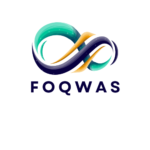Of course! Computer programming is the process of designing and building instructions that a computer can execute to perform specific tasks or solve problems. It involves writing code in various programming languages, such as Python, Java, C++, and many others. Here’s a brief overview of some key concepts in computer programming:
- Variables: These are used to store data values. Variables can hold different types of data, such as numbers, strings (text), boolean values (true/false), etc.
- Data Types: Different programming languages support various data types, including integers (whole numbers), floating-point numbers (decimals), characters, strings, boolean values, arrays, and more.
- Control Structures: These allow you to control the flow of your program. Common control structures include conditionals (if-else statements), loops (for, while), and switches.
- Functions/Methods: These are blocks of reusable code that perform a specific task. They help in organizing code and making it more modular and easier to understand.
- Object-Oriented Programming (OOP): OOP is a programming paradigm based on the concept of “objects,” which can contain data (attributes) and code (methods). Classes are used to create objects, which can then interact with each other.
- Error Handling: Programming involves handling errors and exceptions that may occur during execution. This is done using try-catch blocks or similar constructs to gracefully handle unexpected situations.
- Input/Output (I/O): Programs often need to interact with users or other systems by taking input and producing output. This can include reading from and writing to files, as well as displaying information on the screen.
- Algorithm Design: This involves creating step-by-step procedures or algorithms to solve specific problems efficiently. Good algorithm design is essential for writing efficient and scalable code.
- Data Structures: These are used to store and organize data in a computer so that it can be accessed and manipulated efficiently. Common data structures include arrays, linked lists, stacks, queues, trees, and hash tables.
- Debugging: Debugging is the process of finding and fixing errors or bugs in your code. This often involves using debugging tools, print statements, or other techniques to identify and resolve issues.
These are just some of the fundamental concepts in computer programming. Mastery of these concepts, along with practice and experience, can help you become a proficient programmer.
Certainly! Here are some additional concepts and practices in computer programming:
- Comments: Comments are used to document code for clarity and understanding. They are non-executable lines of text that provide explanations or annotations within the code. Good commenting practices can make code more readable and maintainable.
- Version Control: Version control systems like Git are used to manage changes to code over time. They allow multiple developers to collaborate on a project, track revisions, and revert to previous versions if needed.
- Testing: Testing is crucial for ensuring that code behaves as expected and meets requirements. Various testing techniques include unit testing (testing individual components), integration testing (testing how components work together), and acceptance testing (testing against requirements).
- Performance Optimization: Optimizing code for speed and efficiency is important, especially for large-scale applications. This can involve profiling code to identify bottlenecks, using algorithms with better time or space complexity, and optimizing resource usage.
- Security: Writing secure code is essential to protect against vulnerabilities and malicious attacks. Practices such as input validation, data encryption, and proper authentication help enhance the security of software systems.
- Documentation: Documenting code, APIs, and system architecture is important for understanding and maintaining software. Clear and comprehensive documentation helps developers and users understand how to use and contribute to a project.
- Frameworks and Libraries: Frameworks and libraries provide pre-built components and functionality that can be used to expedite development. They abstract away common tasks and provide standardized solutions to specific problems.
- Concurrency and Parallelism: With the rise of multi-core processors, programming languages and frameworks support concurrency and parallelism to take advantage of multiple processing units. This enables efficient execution of tasks simultaneously, improving performance and scalability.
- Cross-Platform Development: With the proliferation of different devices and platforms, cross-platform development allows software to run on multiple operating systems and devices with minimal changes. Frameworks like React Native and Xamarin facilitate cross-platform development for web and mobile applications.
- Continuous Integration/Continuous Deployment (CI/CD): CI/CD practices automate the process of building, testing, and deploying software changes. This ensures rapid and reliable delivery of updates and reduces the risk of introducing bugs into production environments.
These are just a few more aspects of computer programming that developers may encounter in their work. Mastering these concepts and practices can help programmers become more effective and successful in their endeavors.
